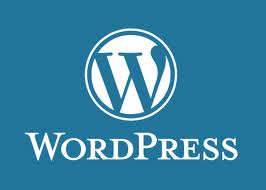If you are interested in becoming a WordPress designer, you might want to consider these WordPress plugin development tips to learn more about WordPress design and how you can easily design your own WordPress plugin for your own development or for the use of other WordPress bloggers.
The best part about WordPress plugins is that they allow for easy modification of your WordPress blog. They make it so any WordPress blogger can add in fun features and tools that can be used both by the WordPress blog admin as well as the visitors that come to the blog for more information. There is tons of blog functionality that can be added to any WordPress blog or website with the usage of a plugin. As a WordPress designer it is important to know how to develop your own WordPress plugins so you can provide these benefits to any WordPress user or even yourself if you are so inclined to simply use these WordPress plugin development tips for your own usage on your own blog.
WordPress Plugin Development Tips:
First, let’s explain exactly what a plugin is and what it does. A WordPress plugin is a program that works as a set of functions or a single function depending on how it is written in the PHP scripting language. This adds a specific set of features and services for your blog that can be easily integrated with any WordPress blog using access points and methods that are provided by the WordPress Plugin Application Program Interface (API).
You may have started your own WordPress blog only to notice that you are in a desperate need for your blog to have this particular function. Before you begin making your own plugin, first check the web to see if you can find it there first. With so many WordPress web designers, there is a chance it has already been made and it is much easier to just download it from another website or designer. However, if you cannot find the plugin you are looking for or if it ill-made or not designed to suit you needs fully, you might want to continue reading these WordPress plugin development tips so you can begin building your own plugin.
Keep in mind to progress any further, you will need to be at least somewhat proficient in PHP scripting language as well as with WordPress. If you aren’t you might want to consider having another WordPress designer take over on the design for the plugin you need, or you might want to brush up on your programming skills before you get started.
First, you need to make a name for your plugin based on what you plan to design it to do. Make it unique and memorable especially based on if you plan to share or sell this plugin on the web. Be sure there are no other plugins of the same name or it will not work because it cannot have the same PHP file as another plugin.
Next, you can split your plugin into multiple files, but remember it must have at least one PHP file. You can also include other types of files if that is how you wish to create it: JavaScript, CSS, image files, language files, etc. If you choose to have multiple files, make sure you put them all in the same directory with a unique title name. This way you can tell your plugin users to install the entire directory when they download your plugin.
You might also want to create a Readme file if you choose to go that route. It is also super helpful to create a web page that actually acts as the homepage for the WordPress plugin. This is a great way for you to explain to the users how they can install the plugin, what it is form etc. To continue the process, you will want to put your programming information into the main Plugin PHP file. Start with the header and then go with the information about licensing the plugin.
A couple other WordPress plugin development tips to keep in mind when you are creating your plugin is to use one or more WordPress hooks to complete the function process when you are developing the plugin. Next, add in template tags that can also help with the functionality of adding your plugin to a WordPress blog. This is helpful in case the user wants to add in these template tags to their blog or blog post. Make sure you save often when you are creating the functions for your plugin in between sessions.
Lastly, keep these tips in mind as you develop your plugin:
- Make sure the code of your WordPress plugin follows the WordPress coding standards and consider the Inline Documentation standards as well.
- Keep in mind that the functions of your plugin must have unique names that are different from the functions in the WordPress core, other plugins and themes.
- Be sure to select only what you need even though databases select data super fast. This will simplify the entire process,
- Make sure you eliminate PHP errors in your plugin and double check the functionality to make sure it works.
Using all of these WordPress plugin development tips are a great way to get started building your own WordPress plugin. Be sure to check out the WordPress codex online to learn more about the process and to help get started with the programming side of developing your plugin.
